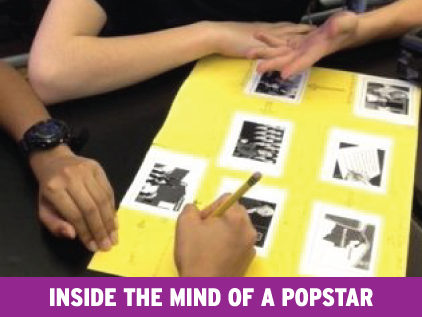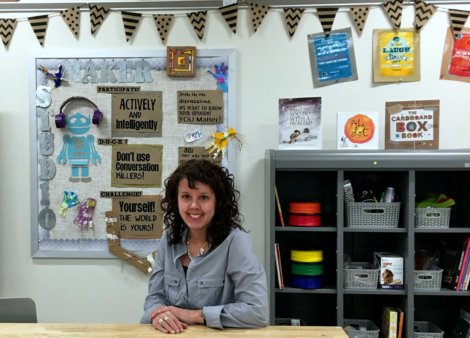
Using BrainPOP Español Within an Integrated Study of Social Justice
Posted by Andrew Gardner on
In this guest blog post Spanish teacher Erin O’Leary describes using BrainPOP Español to support an integrated unit of study with Social Studies, ELA and Art in her 7th grade Spanish class.
During the first semester of seventh grade, students become familiarized with the Unites States’ independence movements in Social Studies and Humanities / English, delving into recurring themes regarding the importance of social and political activism. The roles of various individuals who brought about significant change are also a central component of their study. Students investigate and discuss the lives of these individuals and determine why they had the courage to act and what lessons were learned from their struggles.
In Spanish, the overall themes are the same, although we study a different geographical region. The students investigate the independence movements of northern South America, particularly those led by Simón Bolívar in Bolivia, Panama, Venezuela, Ecuador, Peru and Colombia. Students learn vocabulary words in relation to the topics of “revolution” and “independence”, many of which are cognates and have been previously explained in their English and Social Studies classes. The assimilation of this vocabulary prior to in-class historical storytelling in the target language helps students strengthen their listening comprehension, while the the physical vocabulary list supports them in all oral and written communication tasks.
In Social Studies and Spanish, students compare and contrast the two movements and partake in a character study. As part of the character study, students investigate significant leaders of the independence movements, such as Benjamin Franklin and Simón Bolívar, and reflect upon and discuss their thoughts about why these individuals had the courage to act. What was it about these individuals’ background, character, and life experiences that compelled them to take this course of action?
The concept of self- identity is of great importance to the unit and this is further built upon in other disciplines. In Art, students discuss the many influences on our identities and sense of self: gender, nationality, geographic location, family, socioeconomic status, ethnicity and life experiences. The students are asked to do a timeline of their lives, being careful to include “doorway” events, turning points of great significance in one’s life. Following the timeline, each student makes a detailed artwork about one remarkable doorway event in their life. Combining this component with the character study helps to strengthen the overall concepts and themes of the unit and allows the students to have a personal attachment as well. In Spanish, before covering historical information, we also study vocabulary pertaining to self-identity such as physical appearance, character traits, family, professions and tener expressions.
Brainpop Espanol has a wonderful educational video along with accompanying activities about the life of Simón Bolívar, which was an incredibly helpful resource in supporting the students’ overall comprehension. The video is just under six minutes in length, which is perfect because many historical videos can be too wordy and lead students to feel overwhelmed and frustrated. Even though the video is fast-paced, students can use the subtitles (which are still in Spanish – a good thing!) and play it back as many times as needed.

When teaching a foreign language, especially when covering more advanced multi-layered content, it is wonderful to have as many visuals as possible. The previous study of vocabulary accompanied with the historical storytelling and use of the video, are a substantial foundation for students to then gradually produce their own written work and engage in spontaneous conversation.
The greatest part is that even though students are being held to high expectations and challenged, they really enjoy it! The BrainPOP interface is easy to use and the students are familiar with and fond of the characters Tim and Moby. The technology component, especially when including an animated video, make it very engaging for the students.
Brief Lesson Description
Day 1 – 4 – Introduce and reinforce “independence vocabulary”. Background information is presented regarding the independence movements in South America. Historical storytelling regarding the life of Simón Bolívar
Day 5 – BrainPOP Español video and accompanying activity titled, “definitions”.
Day 6 – Presentation with screenshots taken from the BrainPOP video and there is a whole-group discussion. The students describe highlights from the video that correspond to each picture.
Day 7 – Students are placed in small groups and are given a manila folder filled with the same screenshot images taken from the video. The images are all jumbled up and the students must work together to put them in order. Groups must work together while speaking in Spanish. After placing images in chronological order, students then write captions under each one, using their own words, thus creating a mini timeline of Simón Bolívar’s life.
About Erin:
Guest Blogger Erin O’Leary has nine years of experience as a foreign language teacher and is currently teaching 2nd and 7th grade Spanish at The School at Columbia University in New York City. Erin has been an instructor for The School at Columbia University’s Teach21 professional development workshops for educators, leading workshops pertaining to the integration of technology in the foreign language classroom.














